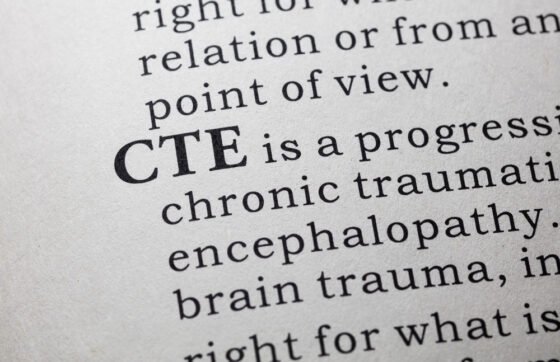By David Stephen
What are the arrangements in a brain that a hit to the head may result in functional disruptions? How can the brain be modeled to prospect effects of hits and better therapies? Two important points in exploring answers about the brain: How does the brain organize information and how is information transported across the brain? If information organization or transportation is interrupted, in what ways might social and occupational activities wane?
There is a new [July 29, 2025] report by ABC News, Manhattan shooting suspect claimed to have CTE, mentioned NFL in note: ‘Study my brain’, stating that, “CTE, or chronic traumatic encephalopathy, is a brain disease linked to repeated hits to the head, often seen in military veterans and athletes including football players, hockey players and boxers. CTE can’t be diagnosed in a living person with certainty, but doctors may suspect it based on symptoms and history of head trauma. Symptoms include memory loss, mood changes, confusion and trouble thinking clearly.”
What is memory? Simply, if a memory is lost, does it mean that the configuration for that memory, in the brain, is lost, or does it mean the transport to get to the location of the memory is lost? What is mood? What are mood changes? What is confusion? What is trouble thinking clearly?
Making conceptual progress in brain science would involve exploring empirical evidence for answers. What is the formation for information storage? What is the formation for transport? For example, in neurotechnology, it is possible to access certain information from the cerebral cortex — with electrodes — through electrical signals. This means that the question of configuration or transport is correlated with electrical signals. Also, with psychiatric medications, chemical signals can be induced or inhibited, with effects on mood, thinking and so forth. While neurons — in clusters — host [conceptually] sets of electrical and chemical signals, it can be theorized, with evidence, that electrical and chemical signals are the basis of information organization and transportation in the brain. While contributions are possible from gene expressions, glia and so forth, the basis of the mind — for mood, thinking and so forth — are electrical and chemical signals, conceptually.
There is a new [July 29, 2025] story in The New York Times, Former Football Players With C.T.E. Have Turned to Violence, stating that, “He would not be the first former football player suffering from C.T.E. to turn to violence or to die by suicide. Andre Waters, Dave Duerson, Junior Seau and other former football players have killed themselves with guns, and Duerson and Seau appeared to deliberately shoot themselves in the chest so that their brains could be studied. Mr. Duerson, like Mr. Tamura, left a note asking that his brain be studied. In rare cases, former athletes turned guns on others. Aaron Hernandez, the former New England Patriots star tight end who was found guilty of shooting and killing an acquaintance, later killed himself in prison. In 2017, Mr. Hernandez was diagnosed with a severe form of C.T.E. In 2021, Phillip Adams, a former N.F.L. cornerback who had returned to his hometown, Rock Hill, S.C., shot and killed five people and died by suicide. Mr. Adams had struggled to find work after his professional career fizzled and had been displaying increasingly erratic behavior. Researchers have been trying to develop a test for C.T.E. in the living, but results have been uneven. The future of testing for C.T.E. hinges on developing ways of identifying the tau protein without requiring brain samples. Scientists in multiple research institutes are working to identify biomarkers for the disease that can be seen in samples of blood, saliva or spinal fluid or by using brain imaging scans.”
An option for a major test for CTE, especially in the living, will be to develop a thorough explanation of all the symptoms of the condition, using the collection of the electrical and chemical signals, in clusters of neurons. This would use information organization and transport to explore where things may have gone wrong and to prospect new therapies — because of observed changes. There could be clear transport cuts. There could be clear configuration shortages. It will decide where to seek solutions and to avoid firearm suicides and homicides. Electrical and chemical signals can be assumed to be configurators for functions, not for neural communication.
The human mind, distinct from the body, can be conceptually described as the collection of all the electrical and chemical configurators — with their interactions and attributes, in sets, in clusters of neurons — across the central and peripheral nervous systems. Simply, the human mind is the set[s] of [neuro]configurators. Interactions means the strike of electrical configurators on chemical configurators, in sets. This means that anything that can have an effect on electrical configurators or chemical configurators can influence the mind. So, functions are from interactions. While attributes grade the functions or determine the limits or extents for those functions.
Memory loss, mood changes, confusion and trouble thinking clearly
Memory, in the brain, is mostly available as thick sets [of electrical and chemical configurators]. This means a collection of whatever is common between two or more thin sets. So, a chair is a thick set. Most interpretation for chairs are done within that thick set. Within the thick set, there are paths to access other information. If something goes wrong with the set or path, the memory of chairs could be impeded. Also, there are paths from other sets to that thick set. If there are interruptions too, there could be memory loss. It is possible to check if it is the whole thick set that is lost [or some] by showing different kinds of chairs. It is possible to rebuild it again, as new thick sets in memory. If it is the path, it is workable to use a lot of chairs in view [in rehabilitation]. Just as an example, as real-world cases are more complicated.
Mood is an emotion. Sets [of electrical and chemical configurators] for emotions often bear angular displacements, making them linger, in the array [an attribute] towards prioritization. As soon as bad mood shows up, knowing that it is the case may result in seeking out possible options to remove the set from the lock, at the angle. Confusion could be a result of too many splits of electrical signals or the use of old sequences instead of new. Thinking troubles could be similar, but may involve low intensity of electrical configurators, low volumes of chemical signals, adjusted thick sets and so forth.
Progress against CTE could arrive from theoretical neuroscience, as other efforts mount.
| ReplyForward |






1 Comment
CTE’s are very prevalent among military veterans who worked EOD, Field Artillery, SPEC OPs and many Infantry and combat engineer jobs. The VA has a brain bank of donated Veteran brains for CTE study. The military only this year has begun to study CTE exposures. One would think this a good thing but when it comes to the military the data will just be used as another means to dishonorably discharge honorably serving combat veterans who develop CTE’s and or PTSD and begging to display behavioral issues such as heavy drinking, drugs or violent outbursts. The VA will come up with some nonsense stating that their studies show that veterans prone to CTE’s developed this made up proclivity during childhood and therefore the military/VA should not provide them just compensation for their high explosives induced injuries. The NFL has and does screw its career players out of disability compensation for CTE injuries as well. Anything to avoid liability is done to the detriment of those suffering from CTE and unable to function normally.The military and VA do this with everything they can think in order to avoid paying out disability payments to those of us injured or even killed due to the military’s negligence. Think about all of the weapons (nuclear biological and chemical) our military have used on bases both CONUS and OCONUS that litter the land air and water anywhere adjacent to the ranges they were fired on or the Depots they were stored in. Many of our nuclear and chemical weapons were over packed into bunkers during the Air Force Bomb handlers Operation Stuff it! Many leaked lethal chemicals and radiation inside of their bunkers. Conventional weapons containing toxic chemical explosive agents like Dumb Bombs and HE Artillery Rounds. And many of these munitions have been stored on open air concrete storage pads like our surplus 500lb bombs leftover from the American War upon Vietnam.
Military bases worldwide have barracks, schools, Mess Halls and Hospitals utilizing plumbing and water treatment facilities that date back to the “Indian Wars” and pre WWII construction. Some bases like those in Hawaii and Camp Lejune use giant underground aquifers for water that have been contaminated by leaky Air Force and Naval in ground fuel tanks that leaked directly into these aquifers. Flame retardant foam containing forever chemicals used for aircraft, ship and depot fires were used routinely on most every bases anywhere in the world. Those chemicals also made their way into the water supply of our bases critical infrastructure.
Nearly anyone who has served in our military, worked as a civilian contractor or were a dependent family member residing on just about any base for any length of time has likely been exposed to deadly levels of toxins. And yet, on average 9 out of 10 legitimate disability claims are denied up front, 8 out of 10 more denied upon appeal. 3-4 out of ten eventually get granted after an average of 15-20 years of continuous appeals. The VA has made it by design to be an extremely difficult, discriminatory, frustrating and unnecessarily lengthy process with the hope that most legitimately disabled and deserving of disability compensation veterans just give up and forfeit their just compensation.
The exact same goes for the Social Security Administration which is also purposely designed to be difficult, discriminatory, frustrating and unnecessarily lengthy in order to frustrate applicants enough that they too give up upon their just compensation.
CTE’s will be used as justifications to NOT enact sensible gun laws. CTE’s will be used as justification to lock people up rather than developing ways to diagnose and treat them. Nobody ever gets held liable for those things manmade that were known to be deadly but were still used anyway. Look at the Opioid Crisis, so far just slaps on the wrists and winks and nods. Look at Agent Orange still killing Americans and Vietnamese people all these decades later.
Now we have an Administration dismantling every environmental and workplace safety protections and agency responsible for overseeing such things. Why? Because real government has gone after billionaires who have contributed to contaminating our planet and people and made them pay stiff fines and clean up their damned messes. But no more! Now it’s a free for all just like the days when Jerome and the Gold King were pumping toxins out in bigly quantities on a daily basis, contaminating the air water and ground all around. That old contamination is still there, still an issue and dumbass “drill baby drill” wants to add to it! Why? Because he’s a greedy dumbass that’s why!